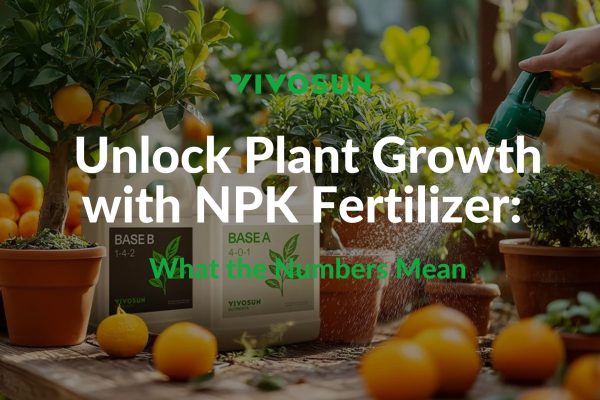Oh no! You just realized you need to be away from your cannabis plants for an unexpected trip. How will you water marijuana plants while you’re gone? Don’t worry, we have two solutions that will help you water your plants while you’re away that will help keep your plants alive.

How long can marijuana plants go without water?
The amount of time marijuana plants can survive without water depends on their growth stage. In general, seedlings and plants in the vegetative stage can go up to 3-4 days without water if necessary. However, plants in the flowering stage require the most water, and they cannot survive more than a couple of days without any water before suffering severe stress and potential death.
Therefore, maintaining an appropriate watering frequency is crucial, especially during the flowering stage. Underwatering leads to adverse symptoms like wilting, slowed growth, and dry, brittle leaves. If you need to be away for an extended period during the flowering stage, it is essential to have someone water the plants at least every 2-3 days to prevent irreversible damage.
How much water does a marijuana plant use per day?
Cannabis is a crop with relatively high water needs. According to research data, during the peak outdoor growing season, each cannabis plant requires an average of about 5-6 gallons (19-23 liters) of water per day. For indoor cultivation, the water requirement is slightly lower, around 2.5-3 gallons (9-11 liters) per day. However, the exact water needs of the plants are influenced by multiple factors, such as temperature, light intensity, and growth stage. Additionally, environmental humidity also affects the plant’s transpiration rate, which in turn impacts water usage. In dry environments, plants increase transpiration to prevent overheating, thus requiring more water replenishment.
To ensure healthy plant growth, maintaining an appropriate watering frequency is crucial. We recommend watering 1-2 times per day during the peak growing season and adjusting the frequency according to environmental conditions and growth stages. Overwatering or prolonged drought should be avoided, as both can cause severe damage to the plants.
In summary, by gaining a deep understanding of the plants’ water needs and implementing appropriate watering strategies, growers can maximize yields and quality. Maintaining reasonable water management not only benefits crop growth but also helps conserve water resources and achieve sustainable cultivation practices.
Two Solutions Help You Water Marijuana Plants
Spike:
First, soak the spike in water then insert your spike into the soil in your grow pot. Connect your spike to a water source by using a tube and place the other side of the tube in the water source (usually a bucket or a tank). When the substrate starts to dry out, the water will be pulled from your bucket into the terracotta spike. Adding the water to the tank will increase the moisture of the space while pulling the water out of the tank will decrease the moisture.
You can use these spikes and tubes to set up a simple automatic system or make a bigger and more complex one for more plants. A bigger system will necessarily include a larger water bucket or tank so do pay attention to that. It is a complete gravity-based auto-watering system. Stick several small spikes onto the main tube and use one main tube to split the water for all the plants. This way you can water many plants easily.
However, this system has a major drawback: the amount of water provided is not precise since it works by a combination of wicking action and gravity—you cannot measure out the amount of water that goes into your pots at any given time. Compared to a water pump with a timer, it is generally less effective.

Pump:
The second solution of water marijuana plants is a Water Pump with a Timer – This is a simple-to-use system that combines a timer with a simple water pump to water marijuana plants on a specific schedule.
In this setup, water will be provided to your plants by a pump that runs water from a tank or bucket directly to your plants through a hose and you can adjust the timer to control the water volume. As your plants grow and consume more water this is a great way to help maintain the growth.
This setup can be used for a long time, once everything is all set, the only thing you have to do is to observe the water consumption—or have someone stop by your house every once in a while to make sure the bucket/tank is full. This is also the major drawback of this system: if you did not calculate the amount of water correctly and the tank goes dry before you return you will burn out your pump. This means it’s important to have someone stop by to check on the water levels and make sure that the tank has enough water.
Or, make sure that you have a tank larger than the amount of water you’ll be giving the plants, calculate the volume of water pumped (what is the pump’s Gallons Per Hour (GPH) rate, how long will you run it for (how many hours over the period you are gone), and how large is the tank?), and then test out the pump system for a little while before you leave to make sure it works correctly.
So how do you set it up? Connect the plastic tubing to either terracotta spikes or lay the tubes across the top of the soil and then connect your tube to a water pump (usually, they need to be fully submerged). The pump may have a built-in timer or you may need to add a timer at the outlet so you can control the on/off schedule.
You can also fill in the tank with nutrient water instead of water for your plants although we don’t recommend it unless you also have another system for clean water since you don’t want to overfeed your plants. To ensure your nutrients don’t go bad, use a thick blanket to cover the whole water/nutrient container to make sure no light penetrates the container since light will encourage microbial bacteria growth, which will deteriorate the nutrient solution.
Set up the timer to water your plants, each pump on the tube will provide a different water rate, what you need to do is to verify you’re using the right amount of nutrient water for each plant and that the water will be split between all your plants.
Usually, you can water your plants twice a day for 60 seconds but the volume of water that is expelled through each tube will be different—as well, each pump is capable of a different GPH so make sure you pay attention to how quickly the water is expelled and calculate accordingly. It is always important that you monitor and observe the operation before you let your system work without you—we recommend observing the system for about a week.

To Sum Up
Overall, you have to pay attention to your plants even if you are away from home. Cannabis plants are fragile and to grow cannabis you have to put a lot of work and money into it. Of course, you should always water marijuana plants on a predictable schedule since this will keep your plants growing and healthy. Try out one of the systems we introduced here or you can check our DWC Hydroponic System Kit and you should have a great vacation.

If you have any questions, please don’t hesitate to reach out to us!
And be sure to check out our other blog posts for useful tips on becoming a great grower!
Take your gardening skills to the next level by subscribing to the Vivosun newsletter. You’ll get exclusive growing tips, inspirational stories from fellow gardeners, and special discount offers delivered right to your inbox.
Take your indoor growing to the next level with our star product – the Smart Grow System. This innovative system makes indoor gardening effortless by fully automating and controlling your environment.
We love the new Vivosun Smart Grow System and we are certain that you too will love it once you try it.
And join our Facebook farmer’s community for even more exclusive contests and prizes!
Download Vivosun App to get 15% off and explore more information!

Lorem ipsum dolor sit amet, consectetur adipiscing elit. Ut elit tellus, luctus nec ullamcorper mattis, pulvinar dapibus leo.






